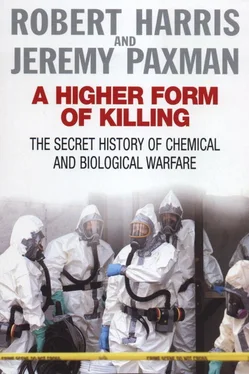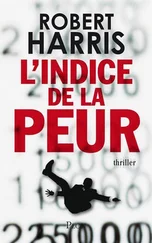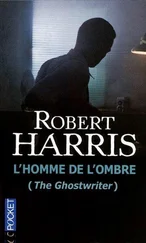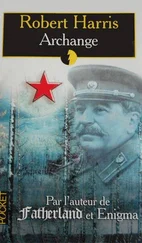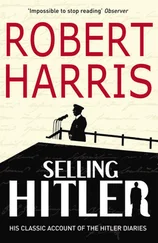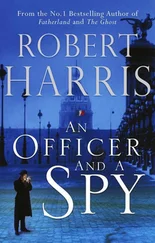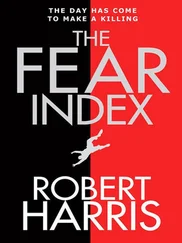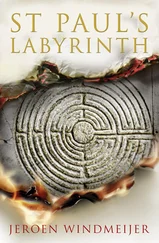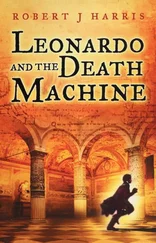Ever since the first gas attack during the First World War, man has attempted to come to terms with the impulse which led him to develop these weapons. The provisions of the Biological Warfare Convention of 1972, and, most recently, of the Chemical Warfare Convention of 1997, have done much to outlaw gas and germ warfare. Yet the spectre, somehow, has never entirely gone away. Why this should be so is one of the recurrent themes of this book.
We have not rewritten or revised the ten chapters which form the bulk of A Higher Form of Killing . No doubt if we were embarking on it today, we would approach the subject differently. Here and there, new facts have come to light – for example about the extent of testing on human volunteers at Porton Down in the 1950s – but these have not substantially altered the story as we originally told it. And we would probably not have been quite so naïve. Looking back, there is an occasional tone of astonished outrage in these pages which seems to belong to another era. This is no doubt partly because we were younger, but partly, also, because we assumed we were writing about weapons which were on their way to becoming obsolete. It never occurred to us that less than two years after this book appeared, Saddam Hussein would be using mustard gas to turn back waves of Iranian infantry, let alone that Iraq would end up filling Scud missiles with anthrax to fire at Israeli civilians.
Therefore the brief eleventh chapter we have added, to sketch in the principal events of the past two decades, we have called ‘Full Circle’. The world, it turns out, has still not heard the last of those terrible weapons, which first made their appearance on a warm spring afternoon in France nearly 90 years ago.
Robert Harris, Jeremy Paxman December 2001
THE 22ND OF April 1915 had been a warm and sunny day, but towards the end of the afternoon a breeze sprang up. It came from the north, from behind the German lines, blew across No Man’s Land, and gently fanned the faces of the Allied soldiers in position around the village of Langemarck, near Ypres.
They were new to the trenches – French reservists and Algerians from France’s north African colony. To them the fresh wind must have seemed a good omen, for a few seconds later, as if on cue, the German guns which had been bombarding them all day suddenly stopped firing. An abrupt silence descended over the front.
A few hundred yards away, four divisions – of the 23rd and 26th German Army Corps – crouched in their trenches. They had waited there since dawn, unable to move for fear of giving away their presence. Now, just as it had begun to seem too late, the moment had come. The wind had changed. An attack.
At five o’clock, three red rockets streaked into the sky, signalling the start of a deafening artillery barrage. High explosive shells pounded into the deserted town of Ypres and the villages around it. At the same time the troops sheltering near Langemarck saw two greenish-yellow clouds rise from the enemy’s lines, catch the wind, and billow forwards, gradually merging to form a single bank of blue-white mist: out of sight, in special emplacements protected by sandbags and concrete, German pioneers were opening the valves of 6,000 cylinders spread out along a four mile front. The cylinders contained liquid chlorine – the instant the pressure was released and it came into contact with the air it vaporized and hissed out to form a dense cloud. At thirty parts per million of air chlorine gas produces a rasping cough. At concentrations of one part per thousand it is fatal. The breeze stirred again, and one hundred and sixty tons of it, five feet high and hugging the ground, began to roll towards the Allied trenches.
Chemical warfare had begun.
The wave broke over the first line within a minute, enveloping tens of thousands of troops in an acrid green cloud so thick they could no longer see their neighbours in the trench. Seconds later they were clutching at the air and at their throats, fighting for breath.
Chlorine does not suffocate: it poisons, stripping the lining of the bronchial tubes and lungs. The inflammation produces a massive amount of fluid that blocks the windpipe, froths from the mouth and fills the lungs. In an attempt to escape the effects, some men tried to bury their mouths and nostrils in the earth; others panicked and ran. But any exertion or effort to outdistance the cloud only resulted in deeper breaths and more acute poisoning. As the tide of gas washed over the struggling men their faces turned blue from the strain of trying to breathe; some coughed so violently they ruptured their lungs. Each man, as the British casualty report was later to put it, was ‘being drowned in his own exudation’. 1
Advancing cautiously behind the chlorine cloud came the German infantry, all wearing crude respirators of moist gauze and cotton tied round their faces. They passed through an unprecedented scene of horror. The dead lay where they had fallen, arms outstretched trying to escape the gas. Interspersed with the corpses, the wounded and dying sprawled gasping and choking as their agonized lungs coughed up mouthful after mouthful of yellow fluid. Any metal object the chlorine had come into contact with was tarnished. Buttons, watches, coins; all had turned a dull green. Rifles were rusted and looked as if they had been left out in the mud for months. Most of the breech blocks on the sixty guns the Germans captured that day were unusable.
Any of the French still capable of movement fled. The British suddenly found the roads and bridges of their sector clogged with retreating soldiers, many of whom could only point at their throats in explanation. By six o’clock, even as far back as ten miles, the chlorine cloud was still making men cough and their eyes smart. By seven o’clock, the few French guns which had been left in action were ominously silent.
The first large-scale gas attack had taken the Allied commanders so completely by surprise that it was not until the early hours of the morning that they began to appreciate the scale of the disaster that had overtaken them. The Germans had torn a hole four miles wide in the Western Front, smashing in an afternoon defences which had held for months. The German commander, Falkenhayn, was as startled as his opponents by the overwhelming effect of chemical warfare. He had seen gas merely as an experimental aid to his attack and had insufficient reserves ready to exploit his advantage. But for that he might have been able to drive right through the Allied line to the Channel ports: the gas attack could have won the war for the Germans. Instead, as night fell over Ypres, the German soldiers dug in. Falkenhayn’s ‘experiment’, the Germans reckoned, had cost the Allies 5,000 men dead and 10,000 wounded.
Thirty-six hours later, while the British and the French were still struggling to fill the breach in their defences, the Germans struck again. At 2.45 am, shortly before dawn on the 24 April, Captain Bertram of the Canadian 8th Battalion noticed some greenish-white smoke rising from the German front line about 600 yards away. Travelling at eight miles an hour, the cloud ‘drifted along the ground towards our trenches, not rising to more than seven feet from the ground when it reached our front line’. 2The bank of high-density chlorine rolled over the Canadians, whose only protection was handkerchiefs, socks and towels which they urinated on and then stuffed into their mouths. Over the next few hours they were subjected to successive waves of gas so thick they blotted out the sun. Once or twice through the clouds they caught glimpses of German troops apparently dressed as divers, wearing large hoods with a single glass eyepiece set in the front.
Читать дальше
